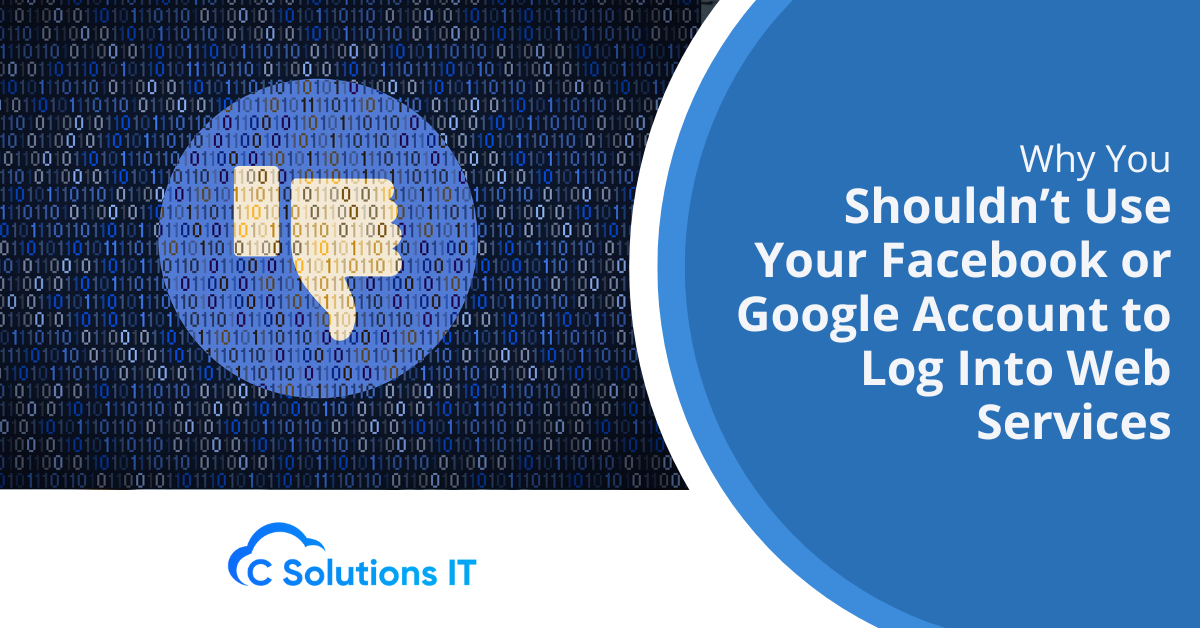Why You Shouldn’t Use Your Facebook or Google Account to Log Into Web Services

In today’s digital age, convenience is at the top of everyone’s priority list, including businesses and consumers. Therefore, it’s no surprise that many web services have enabled the option to use third-party accounts such as Facebook and Google to log in. While this might seem like an easy and hassle-free solution, it also comes with significant risks.
Recently, Chick-fil-A confirmed that hackers had breached its customer accounts and were selling compromised accounts on the black market, leading to major consequences for both the company and its customers. This incident highlights the potential dangers of using third-party accounts to log in to web services.
The Chick-Fil-A Incident
In March 2023, Chick-fil-A confirmed that hackers had breached its customer accounts through an automated credential stuffing attack, leading to the sale of compromised accounts on the black market. This attack occurred between December 18, 2022, and February 12, 2023. The company reported the security breach to the California Attorney General’s Office and took steps to improve its security measures to prevent similar incidents in the future.
What is Credential Stuffing?
Credential stuffing is a type of cyberattack that involves using stolen usernames and passwords to gain unauthorized access to user accounts on other websites. Cybercriminals can obtain these credentials through various means, including phishing attacks, data breaches, and purchasing them on the dark web.
They then use automated bots to test these credentials on multiple websites, hoping that users have used the same credentials across different platforms. In this way, the attackers can gain access to user accounts without having to go through any security measures such as two-factor authentication.
What are The Risks of Using Third-Party Accounts to Login?
The recent Chikfila incident highlights the potential risks of using third-party accounts such as Facebook or Google to log in to web services. While it might seem convenient to have a single account for all your web services, it also means that a security breach on one platform can have far-reaching consequences.
In the case of the Chick-Fil-A incident, hackers gained access to customer accounts on the fast-food chain’s website, but the compromised credentials could also be used to access other web services where customers had used the same login information. This means that the damage from a single security breach can extend beyond the affected platform, causing a domino effect of cybercrime.
When you use a third-party account to log in to a web service, you are granting that platform access to your personal information. This information can include your name, email address, date of birth, and other details that you might not want to share with every website you use. Therefore, by using a third-party account to log in, you are essentially giving away your personal information to multiple platforms, increasing your exposure to privacy risks and identity theft.
How to Protect Yourself
To protect yourself from the risks of using third-party accounts, it’s essential to take some necessary precautions. Firstly, use unique usernames and passwords for each web service you use. This way, if one of your accounts is compromised, it won’t affect your other accounts.
Next, enable two-factor authentication wherever possible. This adds an extra layer of security by requiring an additional verification step such as a code sent to your phone or email. You should also regularly monitor your accounts for suspicious activity and report any unauthorized access immediately.
Finally, avoid using third-party accounts to log in to web services whenever possible. Instead, create a unique account for each platform, and use a password manager to keep track of all your login credentials securely.
Protect Yourself Today
While using third-party accounts to log in to web services might seem like an easy and convenient option, it also comes with significant risks. The recent Chick-Fil-A incident is a reminder that cybercrime is a real and present danger in today’s digital age, and it’s essential to take steps to protect yourself from it.
By using unique usernames and passwords, enabling two-factor authentication, and regularly monitoring your accounts, you can reduce the risks of cyber attacks. Additionally, avoiding the use of third-party accounts to log in to web services is a crucial step in protecting your personal information and reducing your exposure to identity theft.
It’s important to remember that while using third-party accounts might seem like an easy solution, it’s not worth the risks. Cybercriminals are becoming increasingly sophisticated, and it’s essential to take all necessary precautions to keep your data safe. Being vigilant and taking steps to protect yourself can minimize the impact of any security breaches and reduce your exposure to potential cyber threats.
If you’re interested in learning more about how to protect yourself from cyber threats, contact C Solutions today. Our team of experts can provide you with the guidance and resources you need to stay safe online.
